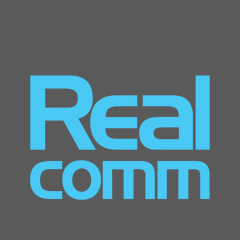Jared Summers of ExxonMobil is Leading the Way to Corporate Real Estate Innovation

Jared Summers is the Data, Analytics & Technology Manager at ExxonMobil, delivering on the promise of transformational change enabled by digital technologies across the entire global real estate portfolio. He has extensive experience managing large-scale global programs. Jared brings a unique ability to understand and articulate complex technologies in a relatable way while rapidly fielding innovative capabilities.
Tell us about your role within your organization.
I am the Data, Analytics & Technology Manager within our Environmental and Property Solutions (E&PS) organization. This role in our corporate real estate group is focused on delivering the promise of transformational change enabled by digital technologies across the entire E&PS value stream. My role is to have a firm understanding of technology trends so that our digital strategy continues to empower E&PS to help our clients do what they do, better. I have focused the organization around four key enablers:
- SPEED: With technology rapidly changing, having the ability to quickly test on a small scale at low cost and speed is important.
INCLUSION: I drive the team towards inclusion and collaboration not only across E&PS, but also across the broader corporation. There are many similarities between E&PS’s operations and the technology enablers that could benefit the rest of the corporation. With this mindset, I have successfully positioned our organization as a digital innovation hub for the rest of ExxonMobil. We also include our IT, Procurement, Legal, and end users who understand the business from the beginning to ensure our requirements are sound. This cross-functionality enables speed and allows the teams to manage expectations and to mitigate potential issues down the road.
SCALE: E&PS manages a global portfolio, thus, any capability we evaluate has to be scalable and reliable across our entire portfolio.
RELATIONSHIPS: Having the organizations’ trust is paramount; ensuring we deliver on the promise and communicate effectively gives us the support required to drive change. My team has been delivering these capabilities, which allows greater freedom to innovate and push boundaries with new technology. We have also developed relationships across ExxonMobil, with our strategic partners and the industry for best practice sharing—so that we are aware of priorities and changes in the market.
It has been a very busy year. Between delivering multiple technology projects, we also finalized our organization’s digital strategy; I am very proud of what we have accomplished. For our digital strategy, we organized our efforts around three main areas: change management, digital portfolio capability, and digital’s role as an enabler to E&PS’s strategy. For a successful strategy we needed to establish that we were executing buy-in at all levels of the organization; it included all stakeholders that intersected both the digital and physical. Gaining buy-in required time to educate, spread awareness, and ensure involvement from teams across the organization both functionally and geographically, so that our strategy would resonate throughout. We also made the conscious decision to select a blend of quick wins and foundational initiatives to launch in tandem. This allowed us to continue to put wins on the board and gain momentum while we were progressing longer-term initiatives.
One item in particular was the development of a new in-house conference room booking solution, which is now in use at our Houston Campus. E&PS had a clear idea of what we wanted from a reservation system and developed it in a way that brought the most value to the organization. ExxonMobil’s in-house reservation system replaced the arbitrary room selection method of employees with an automated, algorithm-optimized one. The system leveraged technology to optimize the scheduling process and ensure that each meeting took place in a room that was able to accommodate the needs of that meeting, removing personal preferences from the process. It provides utilization data that it could use to plan future meeting room space, including the number of rooms by type and size, technologies to include in each, and the appropriate ratio of meeting spaces to employees. The high utilization also suggested that employees were able to use the rooms in a way that added value to their work, instead of settling for a random available space. The utilization data collected by the system gave E&PS the information they needed to make better design decisions and build strategies for future workplace development.
E&PS had a clear idea of what we wanted from a reservation system and developed it in a way that brought the most value to the organization. ExxonMobil’s in-house reservation system replaced the arbitrary room selection method of employees with an automated, algorithm-optimized one. The system leveraged technology to optimize the scheduling process and ensure that each meeting took place in a room that was able to accommodate the needs of that meeting, removing personal preferences from the process. It provides utilization data that it could use to plan future meeting room space, including the number of rooms by type and size, technologies to include in each, and the appropriate ratio of meeting spaces to employees. The high utilization also suggested that employees were able to use the rooms in a way that added value to their work, instead of settling for a random available space. The utilization data collected by the system gave E&PS the information they needed to make better design decisions and build strategies for future workplace development.
What are your highest priority technology initiatives in the next 12 months and what are the drivers behind those initiatives?
Over the next 12 months, I am focusing the organization on delivering value around four main objectives: productivity, smart buildings, workplace, and mobility. We have multiple projects in flight to deliver mobility and collaboration benefits to our organization. Streamlining our processes, reducing barriers to collaboration, and ensuring our teams have mobile enabled platforms to support their respective work requirements are paramount.
One area is around work order management and the ability to support operations and maintenance staffs globally to perform their tasks on the go. It requires a mobile solution that is device agnostic, but more importantly, that it is easy to use. After evaluating alternatives available in the marketplace and determining none were perfectly suited for our needs, we decided to build our own solution in-house, giving us the ability to customize workflows and terminology, and build the user experience around how we operate.
We have seen fantastic hard and soft benefits from these projects. Additionally, we are executing a smart building strategy, so we can leverage the benefits around operational efficiency, energy savings, and client satisfaction. This strategy is a comprehensive evaluation of our current and future portfolio leveraging a persona based approach. It enabled the development of a digital offerings playbook based on site persona and digital readiness. The playbook presented a portfolio-based approach leveraging rationalization and standardization on necessary digital capabilities required at each location. This supports smarter decision making and ensures we are fully leveraging digital for our business strategy.
What technology/automation/innovation trends will have the most impact on corporate real estate over the next three years?
For me personally, one of the most interesting technologies on the horizon is Artificial Intelligence and Machine Learning. There is still a lot of hype around this space, and discrete, cost effective actionable use-cases are a rarity; however the potential is transformational. Imagine a time when a building completely operates itself, from day-to-day adjustments in HVAC to parts requisition for a component that is approaching failure, all automatically. This will require a shift in how companies staff and manage corporate real estate groups as the skills required to maintain these models is not something most companies have on hand.
This Week’s Sponsor
Corning is one of the world’s leading innovators in materials science. For more than 165 years, we have applied our unparalleled expertise in specialty glass, ceramics, and optical physics to develop products that have created new industries and transformed people’s lives. Corning® Optical Network Evolution (ONE™) solutions provide fiber optic infrastructure to satisfy the application and bandwidth requirements in demand today, and tomorrow. Be it multi-family, commercial, retail, or mixed use, the real estate market requires connectivity to support the “live, work, and play” lifestyle embraced by tenants and buyers. www.corning.com/one-infrastructure
Read Next
 5/15/2025
5/15/2025
Tech, Talent and Transformation: 2025 Digie Finalists Announced For 27 years, Realcomm has presented the Digie Awards to acknowledge companies, real estate projects, technologies, and individuals that have advanced the commercial real estate industry through the strategic use of technology, automation, and innovation.
 5/15/2025
5/15/2025
Empowering Space Management with Data-Driven Visualization For effective CRE space management, it’s critical to centralize lease data, maximize rental square footage (RSF), improve energy efficiency and reconfigure spaces to meet changing needs.
 5/8/2025
5/8/2025
The AI-Powered Workplace Evolution: Redefining the Business Landscape In today's rapidly evolving business environment, the fusion of Artificial Intelligence (AI) and Workplace Management is revolutionizing the way organizations approach workspace optimization and operational efficiency.
 3/27/2025
3/27/2025
The Convergence of Edge Computing, Cloud, and AI in Building Automation and Smart Buildings In the built environment, we have seen the convergence of Operational Technology (OT) and Information Technology (IT), later expanding to include Workplace Technologies (WP).








%20(1)%20(1)%20(1).png)


